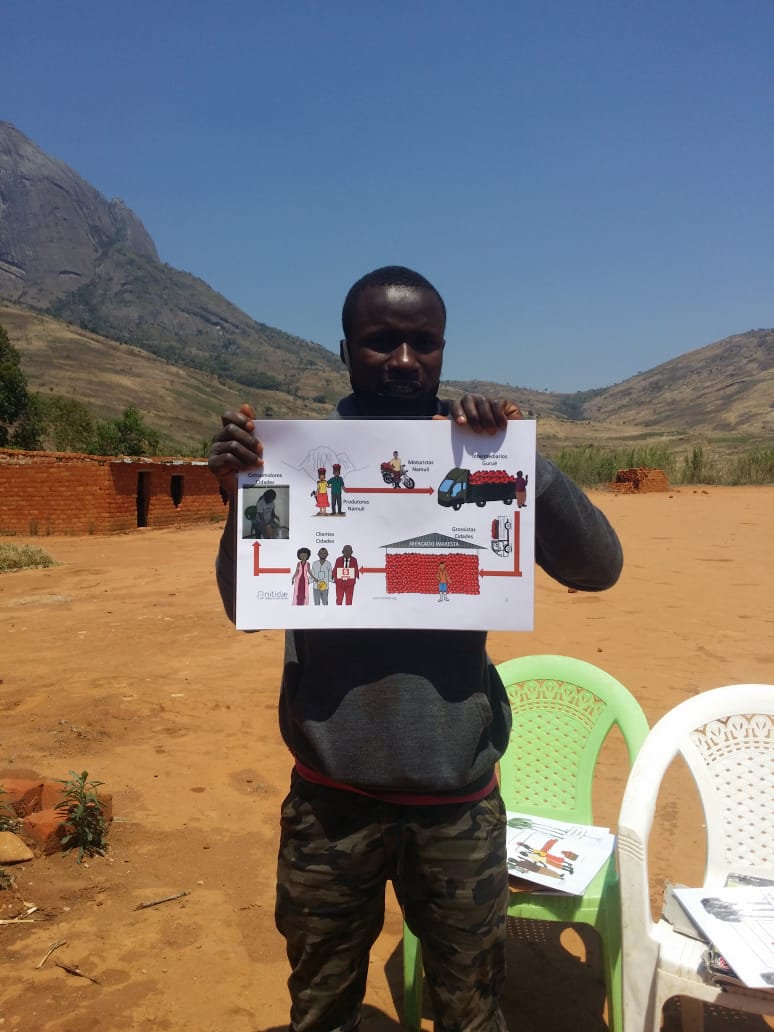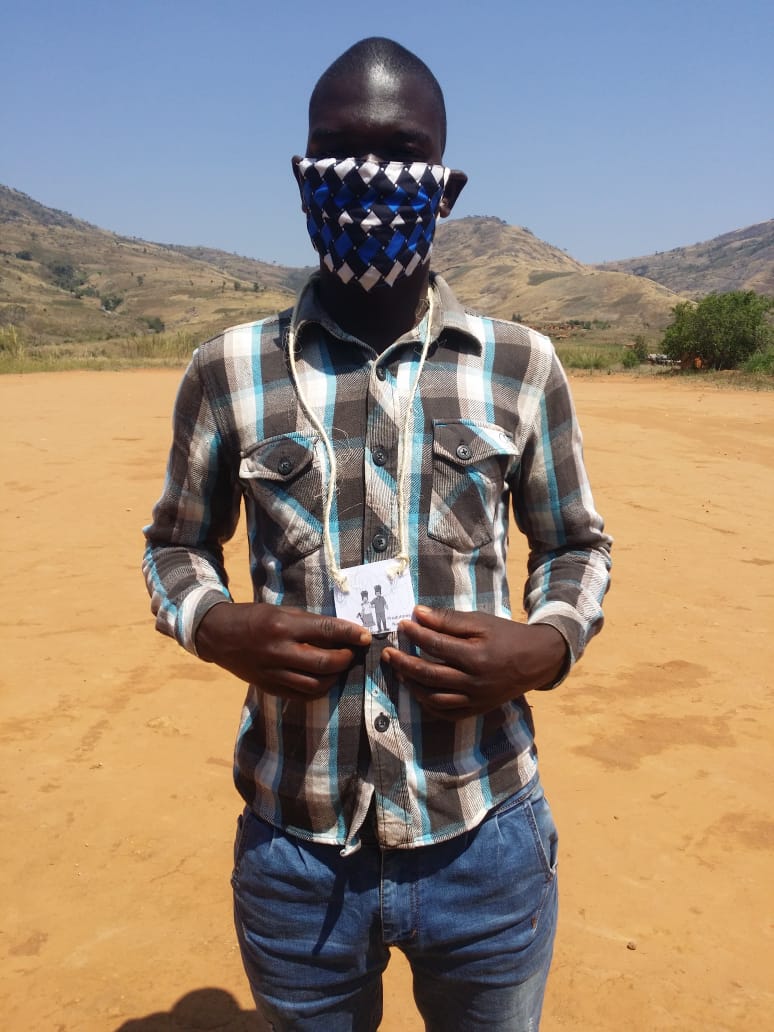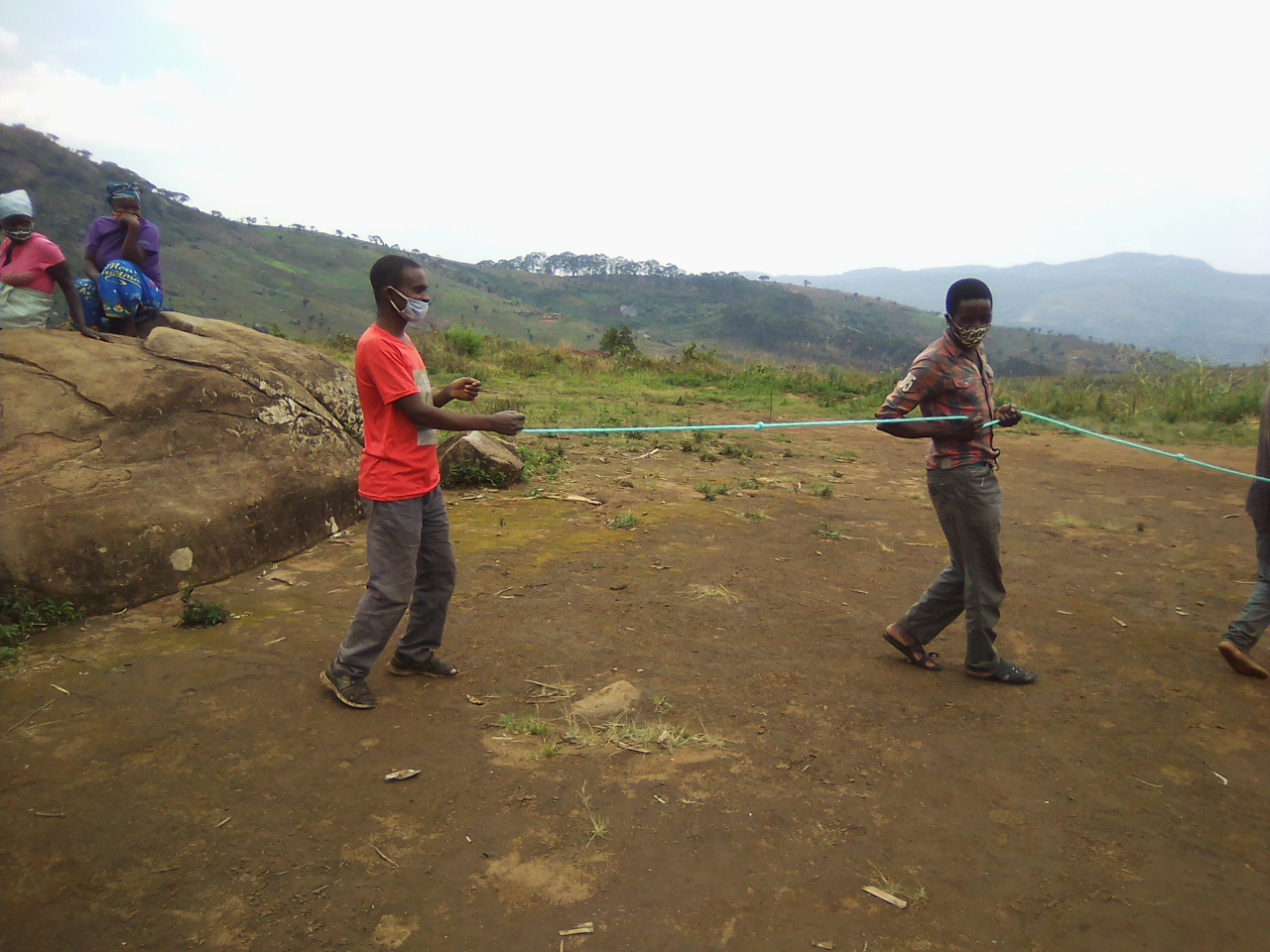Tomatoes can travel a long way from farm to plate. And, whether you are a tomato farmer in the slopes of Mount Namuli or a frequent buyer of tomatoes at the grocery store somewhere in North America, you might not know just how far they travel to be a tasty treat. Over the past month, our team in Gurué organized a game with the tomato producers of Mount Namuli to explore the journey that the tomatoes they grow go on. Here’s the game and how we play it:
- Start: The game tells the story of our colleague Ricardina, who is joyfully cooking until she realizes she ran out of tomatoes to make her nutritious curry. Ricardina leaves her house in a hurry to look for tomatoes to finish the meal she has started. She looks everywhere, from the local market in Mucunha to the larger Wuaresta market in Nampula. Tomatoes are nowhere to be found. She speaks directly with the middleman, who usually transports the tomatoes from the producers into town, to find his truck empty. Finally, she hikes up to Mount Namuli, where the tomatoes she and her family love are grown, and meets with the tomato producers in person. Her journey sparks a conversation with them about what a value chain is, how each individual in the tomato value chain is interconnected, and what that means.
- How to play: Different players in the game represent the different roles in the tomato value chain, from the producer to the middleman, to the seller to the final consumer. At the start of the discussion, participants receive a label with one of these roles at random. They are then asked to represent the unique interests of the producer, the middleman, the seller, and the consumer in a role play, as the group works to put together each step of the value chain in its correct order.
- Who wins: When the value chain game is played well, everyone wins! When participants complete the chain, they are asked to hold a rope to illustrate how they are all united and that the behavior of each has consequences for others. The success of the value chain depends on the behavior of each and every person who is part of the chain. When we communicate and work together, helping each other, we fuel the value chain and everyone comes away with what they need.
Check out photos below of our Tomato Value Chain game:
- Our new colleague, Jonito holding a poster that summarizes the tomato value chain
- Different labels represent different players’ identities in the game. A Namuli producer demonstrating his role in the game
- Players use a rope to symbolize that everyone is united and that the behavior of one person in the value chain has consequences for others



